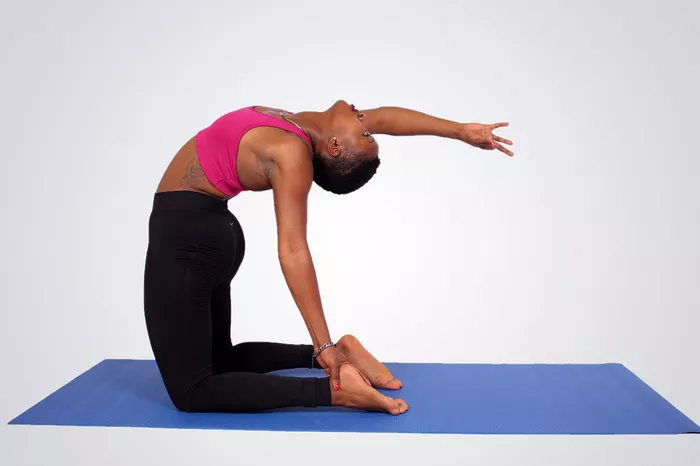Yoga has a rich and ancient history, offering numerous techniques to enhance physical, mental, and spiritual well-being. Among these techniques, Sudarshan Kriya and Kriya Yoga are two highly effective practices that focus on breath control, energy management, and mindfulness. While both share a common goal of achieving mental clarity and inner peace, they differ in their approach, methods, and the philosophies that guide them. Understanding the differences between Sudarshan Kriya and Kriya Yoga can help practitioners choose the practice that best suits their needs and goals.
In this article, we will explore Sudarshan Kriya and Kriya Yoga in detail, comparing their key features, benefits, and the differences between the two.
What is Sudarshan Kriya?
Sudarshan Kriya is a powerful breathing technique introduced by Sri Sri Ravi Shankar, the founder of the Art of Living Foundation. The term “Sudarshan” means “right vision,” and “Kriya” refers to a specific type of breathing technique that helps to purify the body and mind. Sudarshan Kriya is designed to enhance the practitioner’s emotional and physical well-being by harmonizing the body, mind, and spirit.
This technique involves rhythmic, controlled breathing patterns that have been scientifically proven to reduce stress, improve mental clarity, and boost energy levels. Sudarshan Kriya is based on the principles of Pranayama (the yogic practice of breath control), and it incorporates different breathing cycles, each designed to achieve specific effects.
The Sudarshan Kriya technique consists of the following stages:
Ujjayi Breathing (Victorious Breath): This is a slow, deep breathing technique that involves inhaling and exhaling through the nose with slight contraction of the throat. This form of breathing helps to calm the mind, balance energy, and increase oxygen intake.
Bhastrika (Bellows Breath): Bhastrika is a more intense form of breathing where the practitioner inhales and exhales forcefully through the nose. This rapid breathwork stimulates the body, clears blockages in the energy channels, and increases vitality.
Sudarshan Kriya (Rhythmic Breathing): This is the core of the practice, consisting of varying rhythms of slow, medium, and fast-paced breathing. Sudarshan Kriya is designed to bring the body and mind into a state of deep relaxation while also releasing accumulated stress and negative emotions.
Pranayama (Energy Control): After Sudarshan Kriya, practitioners often practice gentle, mindful breathing exercises to restore balance and maintain a sense of calm.
The Art of Living Foundation has made Sudarshan Kriya accessible to millions of people worldwide through courses and workshops, and the technique is considered one of the most powerful methods for achieving mental and physical well-being.
Benefits of Sudarshan Kriya
Stress Reduction: One of the primary benefits of Sudarshan Kriya is its ability to reduce stress. The breathing patterns help to activate the parasympathetic nervous system, which counteracts the fight-or-flight response and induces a state of deep relaxation.
Emotional Healing: The rhythmic breathing patterns help to release accumulated emotional blockages, promoting emotional balance and mental clarity. Sudarshan Kriya is known to alleviate symptoms of anxiety, depression, and trauma.
Improved Focus and Clarity: Practitioners often report increased mental clarity and focus after performing Sudarshan Kriya, which can lead to improved productivity and decision-making.
Enhanced Energy Levels: By oxygenating the body and stimulating the pranic energy (life force), Sudarshan Kriya boosts energy levels, leaving practitioners feeling revitalized and alert.
Improved Sleep: Many practitioners experience improved sleep quality as a result of regular practice, as Sudarshan Kriya helps to relax the nervous system and release tension in the body.
What is Kriya Yoga?
Kriya Yoga is an ancient spiritual practice that was revived by the great yogi and saint, Paramahansa Yogananda. It is often considered a more comprehensive and systematic approach to achieving self-realization and spiritual enlightenment. The term “Kriya” translates to “action” or “technique,” and “Yoga” refers to the union of the individual soul with the divine. Kriya Yoga, therefore, focuses on uniting the practitioner with their higher self through the disciplined practice of specific techniques, including breath control, meditation, and energy management.
The key element of Kriya Yoga is the “Kriya” or breathing technique, which helps to elevate the practitioner’s consciousness and accelerate their spiritual progress. Kriya Yoga emphasizes controlling the breath to harmonize the body and mind, leading to a deeper state of awareness and inner peace.
Core Principles of Kriya Yoga
Pranayama (Breath Control): The practice of Kriya Yoga involves specific breath control techniques that help to regulate the flow of prana (life energy) within the body. These techniques are designed to purify the mind and body, facilitating deeper meditation and self-realization.
Meditation: Kriya Yoga places a strong emphasis on meditation, allowing practitioners to experience a deeper connection to their inner selves and the divine. Meditation practices in Kriya Yoga help to calm the mind, remove distractions, and cultivate awareness.
Dhyana (Concentration): Kriya Yoga practitioners develop the ability to concentrate the mind on a single point, such as the breath or a mantra. This concentration enhances the depth of meditation and helps to quiet the mental chatter.
Self-discipline and Surrender: Kriya Yoga teaches the importance of self-discipline, dedication, and surrender to the divine. The practitioner is encouraged to practice regularly, maintain a positive attitude, and remain humble on the spiritual path.
Benefits of Kriya Yoga
Spiritual Growth: Kriya Yoga is primarily a spiritual practice that helps individuals attain self-realization and experience a sense of union with the divine. The practice of Kriya Yoga accelerates spiritual growth by purifying the mind and removing the obstacles to higher consciousness.
Stress and Anxiety Reduction: Similar to Sudarshan Kriya, Kriya Yoga reduces stress and anxiety by calming the nervous system and promoting emotional stability. The practice encourages a sense of inner peace and tranquility.
Enhanced Focus and Clarity: Kriya Yoga enhances mental clarity and concentration by teaching practitioners to control their thoughts and focus the mind. This clarity can extend to daily life, improving decision-making and problem-solving skills.
Improved Physical Health: Kriya Yoga improves the physical body by increasing oxygen levels, stimulating the circulatory system, and detoxifying the body. It promotes overall health, vitality, and longevity.
Deeper Meditation Experience: The practice of Kriya Yoga leads to deeper states of meditation, which helps practitioners achieve a heightened sense of awareness, calmness, and emotional balance.
Key Differences Between Sudarshan Kriya and Kriya Yoga
While both Sudarshan Kriya and Kriya Yoga focus on breath control and energy management, there are several key differences between the two practices. These differences lie primarily in their approach, technique, and underlying philosophy.
1. Origin and Lineage
Sudarshan Kriya: Sudarshan Kriya was developed by Sri Sri Ravi Shankar and is part of the Art of Living Foundation’s approach to personal development. It is a modern technique that combines elements of Pranayama with scientific research to address stress reduction, emotional healing, and overall well-being.
Kriya Yoga: Kriya Yoga was popularized by Paramahansa Yogananda, though it has ancient roots in yogic tradition. It is a more comprehensive spiritual practice with a deep focus on meditation, self-realization, and achieving enlightenment.
2. Focus of the Practice
Sudarshan Kriya: The main focus of Sudarshan Kriya is stress reduction, emotional healing, and physical vitality. The practice is designed to purify the body and mind through rhythmic breathing, releasing stress and toxins, and promoting overall well-being.
Kriya Yoga: Kriya Yoga has a primary focus on spiritual growth, self-realization, and union with the divine. While it also offers benefits in terms of stress reduction and emotional stability, its ultimate aim is to facilitate deeper meditation and accelerate spiritual enlightenment.
3. Techniques Involved
Sudarshan Kriya: Sudarshan Kriya is a specific set of breathing techniques that include Ujjayi, Bhastrika, and Sudarshan Kriya, along with Pranayama. It is structured and follows a sequential pattern that can be practiced as a daily routine.
Kriya Yoga: Kriya Yoga involves a variety of breathing techniques, including Pranayama and specific Kriyas. It is more of a holistic approach that integrates breath control, meditation, and concentration exercises. Kriya Yoga is usually passed down from a guru to a disciple through initiation.
4. Duration and Accessibility
Sudarshan Kriya: Sudarshan Kriya can be practiced in short sessions and is accessible to people of all ages and levels of fitness. The practice is designed to be easy to learn and can be integrated into daily life for maximum benefit.
Kriya Yoga: Kriya Yoga requires more time and dedication to master, and it is often learned through a spiritual teacher or guru. While it can be practiced daily, it typically involves longer meditation sessions and a more disciplined approach to spiritual development.
Conclusion
The choice between Sudarshan Kriya and Kriya Yoga depends on your individual goals, lifestyle, and spiritual aspirations. If you are seeking to reduce stress, increase energy, and achieve emotional healing in a structured and accessible way, Sudarshan Kriya may be the ideal choice. It offers immediate benefits, such as improved mental clarity, better sleep, and enhanced vitality.
If your primary goal is spiritual growth and self-realization, and you are ready to commit to a more in-depth, long-term practice, Kriya Yoga may be the path for you. Kriya Yoga is a more comprehensive spiritual discipline that involves dedication, self-discipline, and regular practice.
Both practices are deeply transformative and can be highly beneficial to your overall well-being. Whether you choose Sudarshan Kriya or Kriya Yoga, both offer a pathway to deeper self-awareness, inner peace, and lasting spiritual growth.
Related Topics:




















